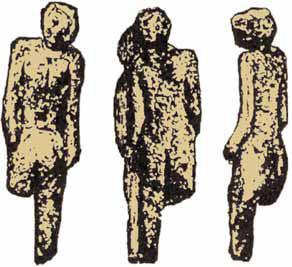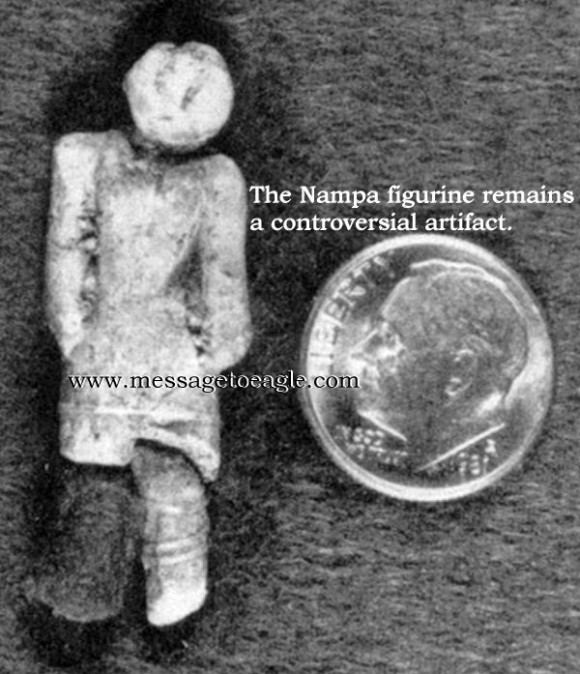I say it again. OOPArt. For those wondering, no I am not losing it and making up words.
Not yet.
The acronym OOPArt stands for Out Of Place Artifacts and refers to a class of objects that would seemingly prove mankind existed long before our current understanding would support, often that humans had technology sometimes far in advance of what they should have had at that time. For my part, the most fascinating of theses is the Antikythera mechanism.

A geared mechanism for calculating eclipses and positions of astronomical bodies. While ti would suggest advanced machining capabilities for its supposed time period, it is also not impossible for a highly skilled craftsman to have this device. A lot is assumed about the precision of a highly corroded and partially destroyed object recovered from a shipwreck in the Mediterranean. Especially one found in 1901.
When dating an archaeological find, context is extremely important. Material dating, when possible is also very important, but environmental factors can affect the accuracy of some forms of dating. But context, when you find an object, and can reference its location for other objects nearby and whether or not there is evidence the ground has been disturbed in the immediate vicinity tells you a great deal. The problem with the large majority, if not all OOPArts is there is little to no context associated with them. They are typically found by accident, removed form their relevant context, and only anecdotally related to their true context which opens up the field to a great deal of fakery and misidentification.
One such highly questionable object is the Nampa Figurine.
A tiny artifact depicting a human figure was found in 1889, when workers were drilling water well near Nampa, in southwest Idaho.
The artifact skillfully formed in clay, is a true mystery that has baffled scientists for many years.
“The record of the well shows that… they had penetrated first about fifty feet of soil, then about fifteen feet of basalt, and afterwards passed through alternate beds of clay and quicksand…down to a depth of about three hundred feet when the sand pump began to bring up numerous clay balls, some of them more than two inches in diameter, densely coated with iron oxide,” geologist of Boston Society of Natural History, George Frederick Wright (1838-1921) reported in his book “Origin and Antiquity of Man” (1912).
Figurine from a well at Nampa, Idaho. The strata at this depth is dated at about 2 million years old(Penny shows scale)“There is no ground to question the fact that this image came up in the sand pump from the depth reported.”
When the workers reached a layer of clay over 300 feet down in the well boring, their steam pump suddenly spat out a piece of brownish clay formed into a small figurine.
“The object is about an inch and a half long, and remarkable for the perfection with which it represents the human form.” He added, “It was a female figure, and had the lifelike lineaments in the parts which were finished that would do credit to the classic centers of art,” Wright wrote.
While there may be no grounds to question the depth of the figurine, there are plenty of grounds to question its true age. We have only the word of the people who found it where it came from. Made of sand and clay it cannot be dated with carbon dating techniques. Since sand and clay are common in river beds, it is entirely possible an underground river could have carried the figurine for miles from its origins, depositing far deeper than its true age would allow if it were merely being buried. There are several above ground rivers in the area as well as nearby mountains.
For that matter, the figurine could have been carried underground BY the humans who made it and left by accident or intent in a deep cave that later collapsed. Kuna Caves Idaho is only ten and a half miles away. And this is the problem with OOPArts of all types. Their very name, “Out Of Place…” should be enough to cause a reasonable person to question.
The article seems to make a great deal out of the iron oxide found coating many of the objects, but this is only a mystery if you do not bother to ask. Basalt, it is clearly stated the well was drilled through a basalt layer, is an igneous rock, cooled volcanic magma rich in iron oxides. No mystery. Even if everything the well drillers of over a hundred years ago is absolute truth sworn on a stack of bibles, there is still no reason to believe the Nampa Figurine represents any evidence of mankind being any older than we now understand.
Follow us on FaceBook for updates and more.
3 comments





